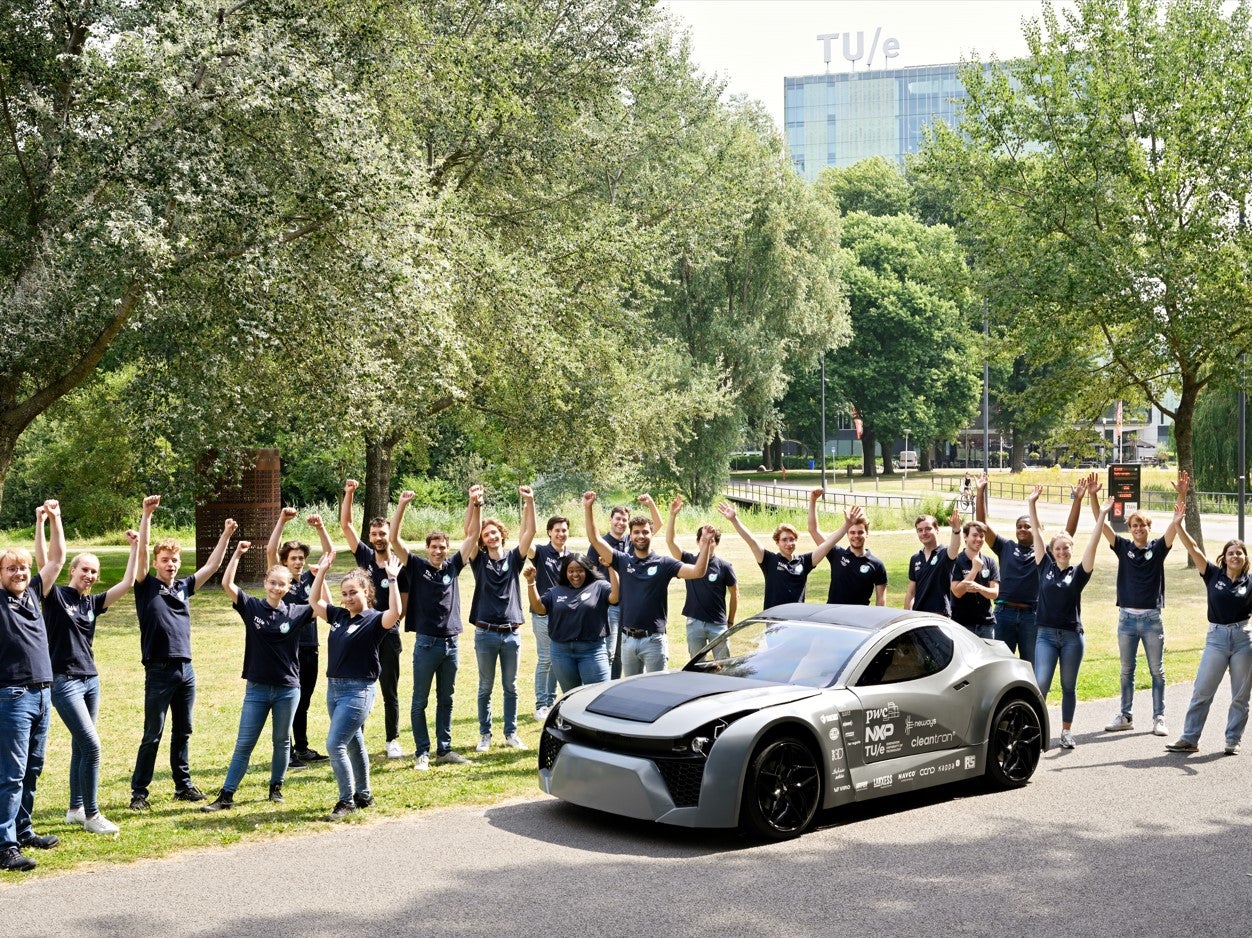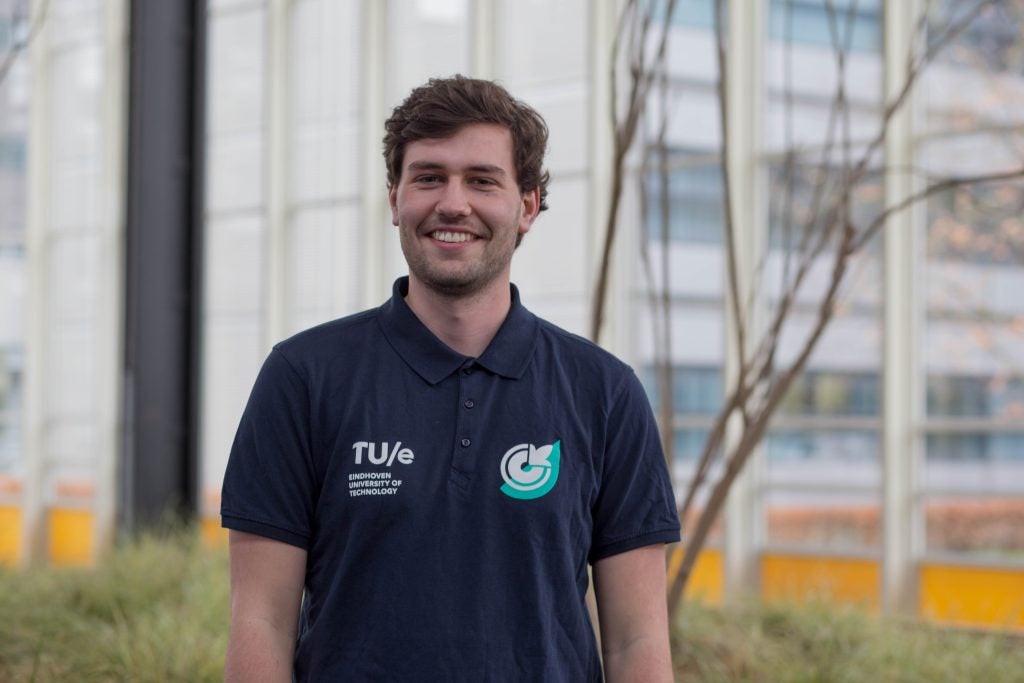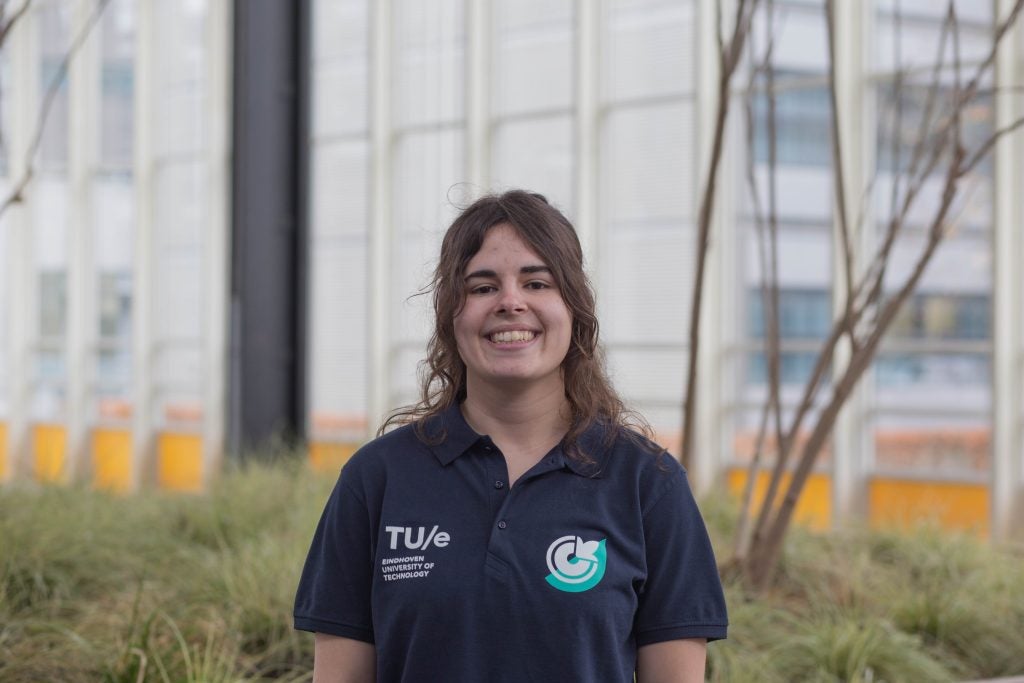
Students from the Eindhoven University of Technology, located in the Netherlands, have developed a what they claim is a fully sustainable electric car concept which captures CO2 while driving. It is hoped the concept of such CO2 capture can eventually contribute to the reduction of global warming. The students are continuing to work and further develop the project, with the aim of eventually making the complete lifecycle of the concept car CO2 neutral and road ready.
The concept vehicle has been designed with a unique filter allowing the car to capture 2kg of CO2 per year when 20,000 km has been travelled. This means that ten cars with this technology can capture as much CO2 as an average tree.
We spoke to two students involved with the development of the Zem to find out more.

Just Auto (JA): What involvement do you have with the Zem project?
Jop Van Aken (JVA): My role was project manager, I was the technical person which saw me doing a lot of planning, helping facilitate companies, assisting in areas where people didn’t have enough time to complete certain tasks.
Louise De Latt (LDL): I was focusing on project strategy and project innovation. We aimed to reach targets we set out, meeting the technical departments and so on.
How well do you really know your competitors?
Access the most comprehensive Company Profiles on the market, powered by GlobalData. Save hours of research. Gain competitive edge.

Thank you!
Your download email will arrive shortly
Not ready to buy yet? Download a free sample
We are confident about the unique quality of our Company Profiles. However, we want you to make the most beneficial decision for your business, so we offer a free sample that you can download by submitting the below form
By GlobalDataWe were the team leaders of some 40 students in total over the whole year; it was a pretty tough job because we have the same backgrounds in terms of industrial design, but we aren’t used to being project managers of a team. We worked very closely with each other in the beginning in terms of the shared mindset and ambitions that we had for the ZEM project.

There were many sleepless nights because we really felt the pressure from the team itself and from the teammates that we had, but also from the companies that we have partnerships with.
How did the concept for the vehicle come to be?
JVA: At the start of the year, we had a lot of brainstorming sessions. Both me and Louise study industrial design so we know about this area, which helped us develop the concept together with our professors from our studies.
We were thinking about the next steps for future mobility and how we can go further beyond them. After a lot of brainstorming and mind mapping, we came to the idea that the vehicle had to be carbon neutral.
LDL: The main idea was to really grasp carbon neutrality in the whole lifecycle of the vehicle itself. So we were looking at the car’s manufacturing, the in-use driving phase and the end of life for the car. Those three areas had to be net zero.
We implemented smart technology and smart manufacturing such as 3D printing but also the reusability and recyclability of our materials and components. We also implemented bi-directional charging; this came from us thinking how can we make the energy flow more circular.
We have implemented solar panels on the vehicle, and the name ZEM – which stands for zero emission mobility – is really something that we would like to push forward.
Could you explain how the technology within the vehicle works?
JVA: The whole process is divided into manufacturing, the driving phase and then end of life – we used 3D printing to make it more carbon friendly. To do this we used recycled materials, we designed the car in a way that it can be easily 3-D printed, because we used already recycled materials to print the car; this means that the carbon cycle of the vehicle is a very closed loop.
In a couple of days, you can have the whole car printed out which means there is not a lot of waste produced, and if something gets broken you can simply re-print this area.
LDL: When looking at the suspension, steering mechanism, and the breaking mechanism we also reused recycled steel parts for that.
In the driving phase the air capturing system has a vital role to play, it now captures 2kg of CO2 per year [on the basis of 20,000 miles travelled per vehicle; the team is looking to get a patent for the direct air capture (DAC) filter]; we implemented the technology in the front of the car so that when the car is driving it is still very aerodynamic. When the air is going into the filter it will be kept inside the car, and then will leave from the side of the car, around the wheels and body panel from an inlet which we have developed.
We have tried to keep the carbon footprint when looking at the manufacturing as low as possible
We have tried to keep the carbon footprint when looking at the manufacturing as low as possible, but in the driving phase we would really like to make the footprint even lower in terms of the recyclability of the materials.
What is the current status of the project?
JVA: What happens is every one to two years a new group of students joins the team and they can pick up where the last team left off. They can decide to build a new car with new materials or carry on with the last car and make it a little bit different, maybe change the interior parts for example.
A new group of students will carry on our research and our findings to hopefully build an even better car.
LDL: We have developed a proof-of-concept vehicle, so now the ambition for the next step is to make the concept more suitable, a more drivable car and more road legal.
We will be travelling with the ZEM to the United States to promote our concept even further. We are travelling coast to coast to present the vehicle to different universities as well as some businesses that may have interest in the project when it comes to investing.
What are the key benefits this concept could bring to the automotive industry?
JVA: The main point for me is the recyclability. At the beginning of the year, we went to the biggest car recycler in the Netherlands, and they showed a lot of garbage that came out of recycling.
It was why we tried to really minimise the effect that the car would have at the end of life when it comes to manufacturing but also the designing.
Next to that, the carbon capturing technology is very interesting. I think technology like this will help the planet a lot and it would be nice to see if this technology could be implemented into other vehicles not just the ZEM.
LDL: I share that same vision as Jop, adding onto that we did a lifecycle analysis calculation, that makes us aware of the full footprint of the project that we developed. That is something that I found very interesting.
We went to an event in Paris which was focused on plastics and also materials they implement in cars and other different industries. Right now, they are really focusing only on the emissions of the use phase, but I think we have to look at the overall lifecycle of the product itself – the car manufacturing, use stage and end of life. If they are inter-collaborating with each other it can work towards lowering the CO2 footprint – this is what we did with the ZEM.







